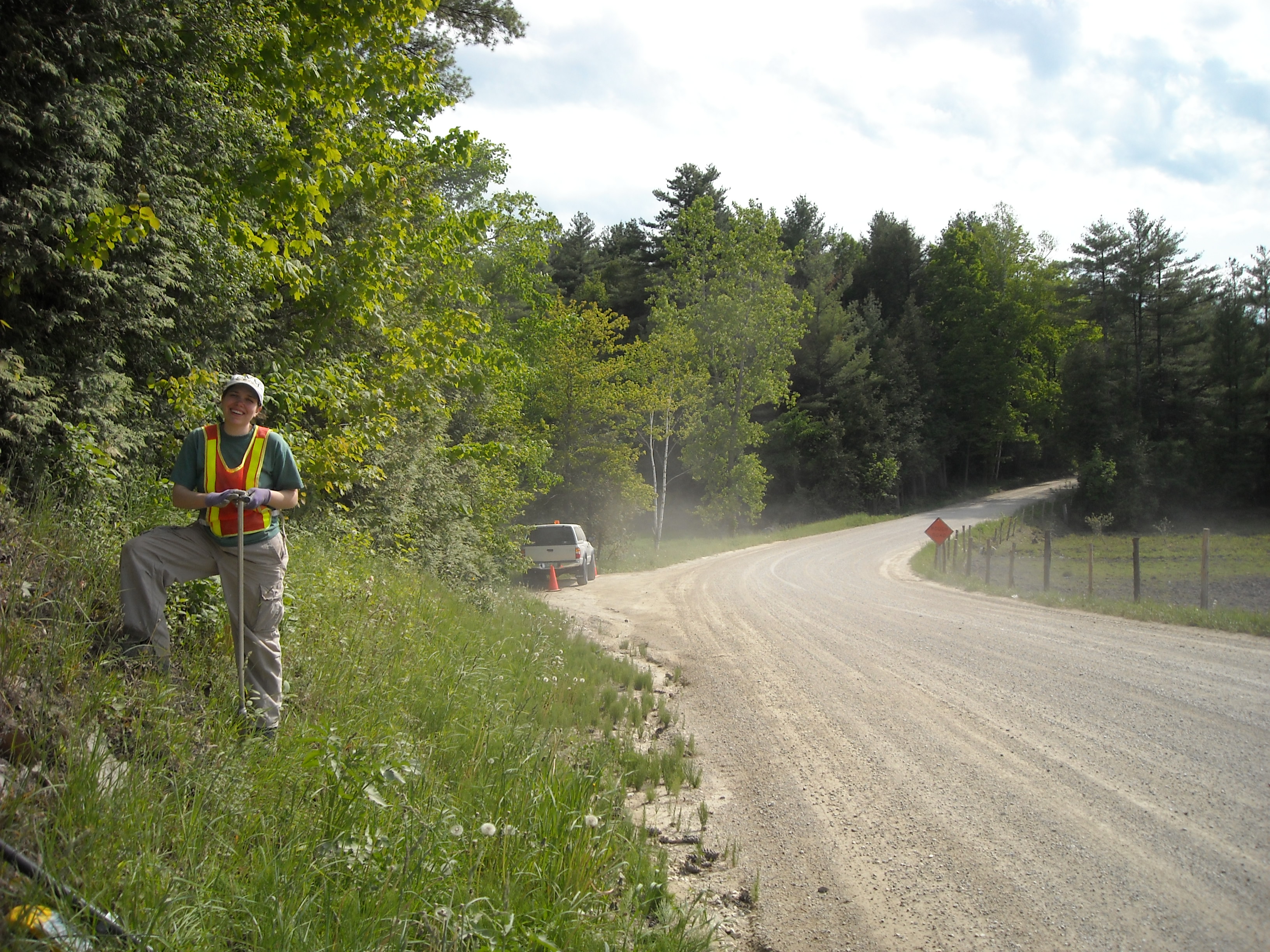Nematodes: New Indicators for Road Impacts
May. 3rd 2017The roads that crisscross Vermont are changing ecosystems across the guardrail. Heavy metals (shed by cars) and salt (applied during winter de-icing) run off our roads into nearby forests and wetlands. Construction, maintenance, and daily traffic also modify nearby soils. A new study from UVM Plant and Soil Science Professor Deborah Neher, along with Kristin Williams and Sarah Taylor Lovell, offers a creative way to monitor roadside ecosystem changes: by tracking nematodes, or roundworms, through the soil. While these tiny roadside critters won’t dent our bumpers in a collision, the data they provide packs a punch for researchers and transportation managers monitoring road impacts.
You might be wondering, why nematodes? Since nematodes live in and modify soils, they act like the proverbial canary in the coal mine. If soil becomes contaminated or modified, some nematodes might leave town. Collectively, nematode groups represent many levels of the food web: some eat bacteria, others opt for algae or fungi, and some are omnivores. The presence or absence of any of these feeding groups might indicate hard-to-detect environmental changes that could have consequences for other nearby organisms. For those in the know, a soil sample teeming with nematodes can provide a snapshot of soil health and quality.
Neher’s group sampled nematodes in two Chittenden county watersheds along three categories of roads: highways, two-lane paved roads, and gravel roads. At each study road, the team set up a transect perpendicular to the road that crossed the roadside slopes and ditches and extended 50 meters into the forest. At each topographical feature, a core of soil was collected. Back in the lab, Neher’s group sorted through their samples, identifying nematodes and testing the soil chemistry.
A whopping 117 genera of nematodes were identified, representing a diversity of food web roles. The distribution of nematode communities correlated strongly with distance from the road. In the disturbed areas close to the road, diversity was lower; early colonizers like bacteriovores who could handle the disturbance were more abundant in these areas. In less disturbed sites further from the road, higher trophic groups like the fungivores and omnivores dominated; these nematodes typically arrive later in ecological succession. The algae-eating nematodes did not fit perfectly into the successional pattern, showing up instead in the wet habitat of roadside ditches.
Some nematode groups were associated with specific plant groups, suggesting that plants — not just the road — influence nematode distribution. For a nematode like Ditylenchus, for example, the hottest real estate is where Festuca grasses, Athyrium ferns or reed canary grass grow.
When Neher’s group analyzed soil chemistry, road topography and maintenance appeared to play important roles. Intuitively, we might expect pollutants to collect downslope, but in some cases upsloping areas had higher pollutant concentrations. Not surprisingly, the busier roads received more salt during the winter as maintenance crews regularly de-iced the roads. These chemical inputs can harm individual nematodes or alter populations through changes in reproduction. Results from this study suggest that chemical movement along roads can be more complex than expected.
Since chemical runoff and vegetation influence nematode communities, the authors suggest that transportation managers add structurally diverse plant buffers along roads. These strips of vegetation could capture and remediate pollutants before they enter sensitive ecosystems nearby. Roadside ditches could also play a role in an optimized transportation system. Like urban rain gardens, ditches could capture runoff carrying unwanted pollutants. While nematodes might not capture everyone’s imagination, they capture what matters: data to help us improve our extensive road system. Now if only we can get the nematodes to help us out with traffic jams.
 ecoNEWS VT
ecoNEWS VT